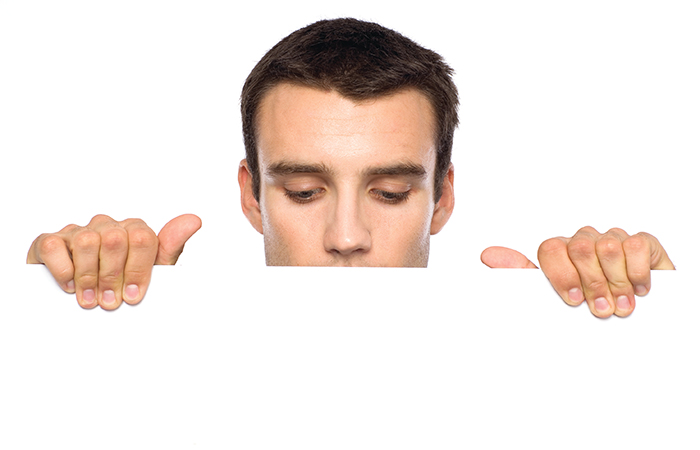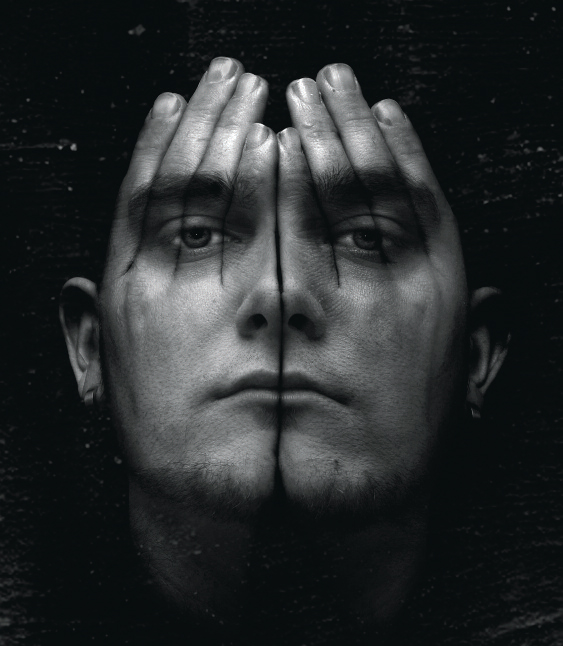Clinical

Men's health: Closing the gap
In Clinical
Let’s get clinical. Follow the links below to find out more about the latest clinical insight in community pharmacy.Bookmark
Record learning outcomes
Men’s life expectancy is getting closer to that of women but gender health gaps remain, particularly in the areas of obesity, diabetes and mental health. Why is this?

Learning objectives
After reading this educational feature you should feel confident about:
- Approaching men with weight issues
- Identifying male customers with mental health problems
- Discussing common male health complaints.
A man's life expectancy is now roughly five years lower than that of a woman. Reasons for this lower lifespan include the fact that more men than women are overweight but men typically account for less than one third of those attending weight loss programmes. Men also comprise only 38 per cent of NHS talking therapy referrals, yet, shockingly, 78 per cent of suicides are male.
Another major issue is that men are much less likely to visit their GP than women, possibly because they dislike discussing sensitive issues or, in some cases, put problems aside rather than face them – all factors that offer community pharmacy an opportunity to help male customers address sensitive health issues, such as those around obesity and mental health.
Facing fat
There is no easy way to talk about someone’s weight, but you can tactfully bring up the subject of obesity by talking about the associated health problems – particularly if there is something you know your customer is already experiencing.
Dr Sally Norton, NHS consultant and weight loss surgeon, and founder of the weight loss website Vavista Life, says healthcare professionals are duty bound to raise the issue of obesity and can not afford to avoid the topic for fear of offending, “because people may not know just how much obesity contributes to diabetes, heart disease, sleep apnoea, liver disease and even such things as male infertility”.
Pieter de Meer, spokesperson for the Men’s Health Forum, says that his organisation is particularly worried that men with pre-diabetes are not being adequately identified and diagnosed. This is something that community pharmacy weight management services could pick up on, he says.
“Men are less likely to go for a NHS health check and to a GP – the main routes for diagnosis – yet they are more likely to be affected by type 2 diabetes than women, and men over 50 years of age are nearly twice as likely to have undiagnosed type 2 diabetes than their female counterparts,” he says. “That is why it is important to talk to men about the symptoms and advise them to take up their NHS health check.”
Pieter de Meer says overweight men “are most motivated to lose weight following a health scare or diagnosis of a weightrelated problem,” and that encouragement from a health professional at this point can make all the difference. However, he advises against simply talking about losing weight with men.
“Men need to be convinced of the health benefits they gain by losing weight such as feeling fitter, the possibility of coming off medication, or reduced incidence of erectile dysfunction. Avoid talking about what men don’t want: for instance, they don’t like strict diets and some men are anxious about looking too thin, so talk about improving fitness rather than becoming slim.”
Fighting fit
According to Sally Norton, research shows that men respond well to a competitive, often sports or activity-related, weight loss programme and, by focusing on fitness rather than weight, “they can see more benefit and are less demotivated if the scales don’t respond as quickly as they would like”, she says.
“Conventional diets don’t work long-term and men do better when combining activity challenges with healthy eating, so a couch-to-5k challenge is a good way to engage men, [using] pedometers to build to 10,000 steps a day, and buddying up with a friend or partner to work together on weight loss.”
She also recommends suggesting halving alcohol intake, limiting takeaways or ready meals to once a week and focusing on non-processed food as “small and sustainable habit changes” that may be better for many men trying to lose weight. “Deep down they often know they need to address issues caused by their weight, and by helping them to understand how obesity impacts on them right now and how they can improve their lives by losing weight, they will be more responsive to discussions.”
Mental health markers
While it is easy to spot obesity, it can be harder to identify customers who are struggling with less physically obvious issues, such as mental health problems. Numark information pharmacist Hilary Cunningham believes all pharmacists should have a baseline knowledge of mental health conditions.
Different people have various symptoms of depression, she says, which may include:
- Feeling sad or ‘empty’
- Feeling hopeless, irritable, anxious or angry
- A loss of interest in work, family or once-pleasurable activities, including sex
- Feeling very tired, not being able to sleep, or sleeping too much
- Not being able to concentrate or remember details
- Overeating or not wanting to eat at all
- Thoughts of suicide or suicide attempts
- Aches or pains, headaches, cramps or digestive problems
- The inability to meet the responsibilities of work, caring for family or other important activities.
There doesn’t seem to be a completely separate type of ‘male depression’, but Cunningham says some symptoms, such as irritability, greater risk-taking and aggression, are commoner in men than in women. Shy men seem to be more likely to become depressed, and men are also more likely to commit suicide.
Common male health problems and how to manage them in the pharmacy
Bladder weakness
 Post-micturition dribble (PMD) or ‘after dribble’ describes the involuntary loss of urine experienced by men immediately after they have finished passing urine, usually after leaving the toilet. Few men admit to having this problem but a great many suffer from it and men of all ages can be affected. PMD is due to a weakness of the muscles of the pelvic floor which surround the urethra. These muscles can be weakened by:
Post-micturition dribble (PMD) or ‘after dribble’ describes the involuntary loss of urine experienced by men immediately after they have finished passing urine, usually after leaving the toilet. Few men admit to having this problem but a great many suffer from it and men of all ages can be affected. PMD is due to a weakness of the muscles of the pelvic floor which surround the urethra. These muscles can be weakened by:
- Operations for an enlarged prostate
- Continual straining to empty the bowels, especially when constipated
- A constant cough
- Being overweight
- Neurological damage
- Persistent heavy lifting.
According to the Bladder and Bowel Foundation, other signs of urinary dysfunction are not normally present, although some men have symptoms such as urgency, frequency, hesitancy and straining. Older men may develop PMD following a prostatectomy and may have associated urinary symptoms. The B&BF recommends two ways of dealing with this problem:
- Pelvic floor exercises (men can find out how to perform pelvic floor muscle exercises at the Bladder and Bowl Foundation)
- Pushing the last few drops of urine from the urethra with the fingers before the final shake.
Constipation
Constipation is a condition of the digestive tract where the passage of waste through the bowels is slow, difficult to expel and sometimes painful.
The commonest cause of constipation is excessive absorption of water by the colon arising from insufficient fluid or fibre in the diet, lack of exercise, some medications (e.g. codeine, iron, diuretics and certain antidepressants and indigestion remedies), and illnesses that slow the passage of the stools through the bowel. The patient may notice abdominal discomfort, bloating, straining and a sensation that the bowels are never completely emptied.
An occasional bout of constipation is quite normal but frequent or persistent constipation should be referred. Patients should also be referred immediately if there are additional warning signs such as bleeding, alternating constipation and diarrhoea, mucus or blockage. The first line of treatment is to address the water balance and then the bulk of the bowel contents with a three-pronged plan of action:
- Increase dietary fluid intake to at least seven to eight glasses of fluid daily. Couple this with a suitable laxative (usually osmotic or bulking)
- Follow up with an increase in dietary fibre. If this doesn’t work, consider the patient holistically, taking into account stress and activity levels
- If the patient is still suffering, consider options such as stimulant laxatives, suppositories and enemas.
Sporting injuries
Sprains and strains occur when muscles or ligaments are overstretched but they can usually be treated with self-care such as the PRICE technique of protection, rest, ice, compression and elevation. They should improve within six to eight weeks – although severe muscle strains may take longer.
Joints, too, can benefit from ongoing care and attention. Injury can occur when a joint is taken outside of its comfortable range of motion, so stronger stabiliser muscles and increased flexibility lessen the likelihood or severity of an injury. Maintaining a healthy weight can also be beneficial on joints. One study claimed that losing about a pound of weight delivers almost a four-pound reduction in knee joint load for each step.
While painkillers can be used to help ease any discomfort, male customers should be advised to see their GP if they are in severe pain or if their injury is not improving or getting worse. When it comes to treating sports injuries, ensure your customers know to always consult their GP or, if necessary, go to A&E if they are worried or in serious pain, but that less serious problems may be treated effectively at home with OTC medicines, devices and supports.
Hair loss
Male pattern baldness – also known as genetic hair loss or androgenetic alopecia – affects up to two-thirds of men in the UK. It usually begins with balding at the crown and thinning or receding hair at the temples, caused by hormones and genetic predisposition. Most men will experience this type of balding by 30 years of age and by the age of 60 many will experience some thinning or balding.
Two treatments appear to help prevent the onset of hair loss or reverse early stage male pattern baldness:
- Minoxidil is a solution applied twice a day for at least four months. Clinical trials have shown that minoxidil can reduce hair loss by up to 90 per cent and growth may even be promoted by up to 20 per cent. Minoxidil was introduced in the 1970s for treatment of hypertension but had the side-effect of hirsutism, leading to the development of Regaine scalp solution, which has been available as an OTC product since 1996. How it works is unclear, but it is believed to extend the growth phase of the hair cycle, making the hair larger and encouraging resting hair to grow.
- Finasteride, a POM, is a steroid reductase inhibitor, taken once daily. Clinical trials have shown that about 50 per cent of men who took finasteride experienced hair growth, and an even greater percentage reported a stop in their hair loss. However, it has reported side-effects such as impotence and erectile dysfunction. Finasteride is not available on the NHS, but is available on private prescription.
Ways of coping
 While the underlying biological processes affecting mental health will be similar for men and women, seeking help and using services may seem so difficult to some men that they prefer either to struggle on unaided or find their own ways of coping, often abusing drugs or alcohol instead of talking with friends and family or seeking professional help.
While the underlying biological processes affecting mental health will be similar for men and women, seeking help and using services may seem so difficult to some men that they prefer either to struggle on unaided or find their own ways of coping, often abusing drugs or alcohol instead of talking with friends and family or seeking professional help.
“Some men are particularly competitive and concerned with power and success,” says Hilary Cunningham, “so if a man is like this, it may be harder to tell someone that they feel fragile or that they need help. These attitudes can stop them from talking to loved ones and doctors about how they are feeling, so they simply don’t get the help that they need.”
St John’s wort
Although St John’s wort (Hypericum perforatum) has been used for centuries to help with mental health conditions and many people say it works for them, it is worth reminding your customers that – despite seeming a ‘natural’ remedy – there is no current evidence that it is an effective treatment for depression and it can have serious side-effects.
St John’s wort may react with other medicines and should not be taken with warfarin, cyclosporine, anticonvulsants, digoxin, theophylline or certain anti- HIV medicines, or with some prescribed antidepressants.
Pharmacy support
Pharmacists are well placed to recognise depression in male customers as a consequence of requests for OTC products, such as sleep aids for early morning waking. Simply asking a man how he is feeling or even commenting ‘you don’t seem yourself at the moment – are things OK?’ could be all that they need to speak up about how they are.
Once you have opened up a dialogue, there is a lot you can do to point your customer on the road to recovery or to more help via a referral to primary care. In the meantime, you can advise them about the various treatments for depression, and that many work well in partnership with each other.
Treatment options
Antidepressant medicines are commonly used to treat moderate or severe depression but can take up to six weeks before the person will notice the full effect. It should be noted that antidepressants do not work in everybody. A useful leaflet on depression is available here.
Psychological (talking) treatments, such as cognitive behavioural therapy (CBT) and counselling, have also been shown to be helpful in dealing with depression, with many health professionals considering the combination of an antidepressant with a psychological treatment to be more effective than either treatment alone.
An explanation of the benefits of CBT for mental health problems may encourage male uptake, along with an understanding that these issues, especially depression, are not “all in the mind” or that sufferers should “get a grip”, says Hilary Cunningham. Pointing out that depression is caused by an imbalance of neurotransmitters, which makes it as much a disease as diabetes or asthma, would enable much of the stigma to be removed.
Pieter de Meer says positive stories about men with mental health problems “may encourage seeking help among the male audience, [so] it would be good to have some leaflets with these stories in the pharmacy”. He stresses the importance of creating “a safe and friendly environment for men to talk and ask questions” and offering support that might just save their lives.
Be matter of fact about bladder weakness in men
Pharmacy teams need to take a matter of fact approach when initiating conversations about male incontinence, says TENA, to help relieve any tension and reassure male customers that they are the trained professionals in this area. For example, prostate problems are one of the commonest causes of urine leakage, so could be used as an opener to tactfully introduce the subject.
Male customers could also be invited to a seating area or consultation room where products could be bought to them so they are not required to spend a long time in front of the feminine hygiene products, which could discourage customers from making a purchase or hurriedly choosing a product that is not best suited to their needs.
The TENA Men range consists of five products. The cupshaped products of TENA Men Levels 1-3 are engineered to fit the male anatomy perfectly, while TENA Men Protective Underwear Level 4 is more absorbent and specifically designed to look and feel like everyday underwear.
The TENA Men Protective Shield is the recommended product for customers who haven’t used urine leakage protection before and is the first black-coloured product in the market for extra discretion.
Further help and information
- The NHS Choices website has a helpful mood self-assessment tool which lets people check their mood and get advice on what might help
- For community pharmacists, mental health information is available through Public Health England and The Health Well
- The Royal College of Psychiatrists has a useful leaflet on depression
- The Samaritans operates a service 24 hours a day, 365 days a year for people who want to talk in confidence on 08457 90 90 90
- The Men’s Health Forum works to improve the health of men and men’s health services. More information can be found here.
